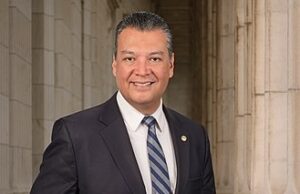Second round of funding for five states, New York City to address remaining needs
WASHINGTON – October 30, 2013 – (RealEstateRama) — One year after Hurricane Sandy devastated coastal communities in the Northeast, the U.S. Department of Housing and Urban Development (HUD) today allocated a combined $5 billion through a second round of recovery funds to five states and New York City. Provided through HUD’s Community Development Block Grant (CDBG) Program, these recovery funds will assist impacted communities to meet remaining housing, economic development and infrastructure needs.
Mortgage in National News |
Mortgage in Social Media |
Last February, one week after President Obama signed into law the Disaster Relief Appropriations Act of 2013, HUD quickly allocated $5.4 billion to assist communities located in the most impacted areas. The second round of funding announced today is intended to support remaining unmet recovery needs that continue to confront these communities one year after the storm.
|
Grantee |
Second Sandy Allocation (Today) |
First Sandy Allocation (February) |
Total |
| New York City |
$1,343,000,000 |
$1,772,820,000 |
$3,115,820,000 |
| New Jersey |
$1,461,000,000 |
$1,829,520,000 |
$3,290,520,000 |
| New York State |
$2,097,000,000 |
$1,713,960,000 |
$3,810,960,000 |
| Connecticut |
$65,000,000 |
$71,820,000 |
$136,820,000 |
| Maryland |
$19,000,000 |
$8,640,000 |
$27,640,000 |
| Rhode Island |
$16,000,000 |
$3,240,000 |
$19,240,000 |
|
TOTAL |
$5,001,000,000 |
$5,400,000,000 |
$10,401,000,000 |
“One year later, it’s clear these communities continue to be challenged by the sheer scale of this devastating storm, requiring further investment to make certain these needs are met,” said HUD Secretary Shaun Donovan, who chaired President Obama’s Hurricane Sandy Rebuilding Task Force. “These resources are making a difference helping individuals, families, and businesses to get back on their feet and come back stronger and more resilient than ever.”
HUD allocates CDBG-Disaster Recovery funds based on the best available data from the Federal Emergency Management Agency (FEMA), the Small Business Administration disaster loan programs, the Department of Transportation, and the Army Corps of Engineers to identify the areas of greatest need in the region impacted by Hurricane Sandy. These allocations will be published in the Federal Register in the coming weeks along with criteria for their use.
In this second Sandy allocation, grantees will be required to identify unmet needs for housing, economic development and infrastructure and may use this allocation to address those unmet needs. Grantees will be required to incorporate a risk assessment in their planning efforts to ensure long term resilience.
Each grantee must update its impacts and needs assessments and conduct a comprehensive risk assessment in order to inform infrastructure investments. The risk assessment must:
- Include climate change impacts;
- Account for changes in development patterns and populations;
- Address how CDBG-DR funds will address those impacts and changes and associated risks; and identify how other federally funded infrastructure projects that have been secured as part the grantee’s recovery effort will address those risks and complement the proposed projects.
- Use information and data provided by the Federal Government, including “Regional Climate Trends and Scenarios for the U.S National Climate Assessment. Part 1. Climate of the Northeast U.S.” and the “Sea Level Rise Tool for Sandy Recovery”, or comparable peer-reviewed information.
- Identify and incorporate resilience performance standards, including other relevant guidance and standards identified in the Hurricane Sandy Rebuilding Strategy.
There will be additional requirements for major infrastructure projects benefitting multiple counties or having a total cost of at least $50 million including a CDBG-DR investment of at least $10 million, including:
- Identifying projects in their Action Plan,
- Demonstrating that the project was selected through regional collaboration; and,
- Evaluating covered infrastructure projects using the collaborative risk analysis developed through the Rebuild by Design Competition.
Obligations or expenditures for infrastructure projects will only be approved once the grantee’s comprehensive risk assessment has been completed and it has demonstrated, to the satisfaction of the Secretary, that the selection and design of the proposed project or projects is consistent with, and supported by, the assessment. Following the grantee’s submission of an action plan describing how funds will be used, HUD will conduct an expedited review to enable funds to be accessed as quickly as possible. HUD has worked closely with state and local partners throughout this process to facilitate action plans being approved as soon as possible.
HUD, OMB and the Recovery Accountability and Transparency Board, which was established by the American Recovery and Reinvestment Act, will provide oversight to prevent and identify waste, fraud and abuse. In addition, the Hurricane Sandy Rebuilding Task Force, established by President Obama to coordinate the federal government’s efforts to support local rebuilding, has gone further by establishing a Project Management Office to monitor spending and progress to ensure the money is used as intended.
Read more about the Federal Government’s response to Hurricane Sandy.
###
HUD’s mission is to create strong, sustainable, inclusive communities and quality affordable homes for all.
HUD is working to strengthen the housing market to bolster the economy and protect consumers; meet the
need for quality affordable rental homes: utilize housing as a platform for improving quality of life; build
inclusive and sustainable communities free from discrimination; and transform the way HUD does business.
More information about HUD and its programs is available on the Internet at www.hud.gov and
http://espanol.hud.gov. You can also follow HUD on twitter @HUDnews, on facebook at
www.facebook.com/HUD, or sign up for news alerts on HUD’s News Listserv.
Contact:
HUD Public Affairs
(202) 708-0980














